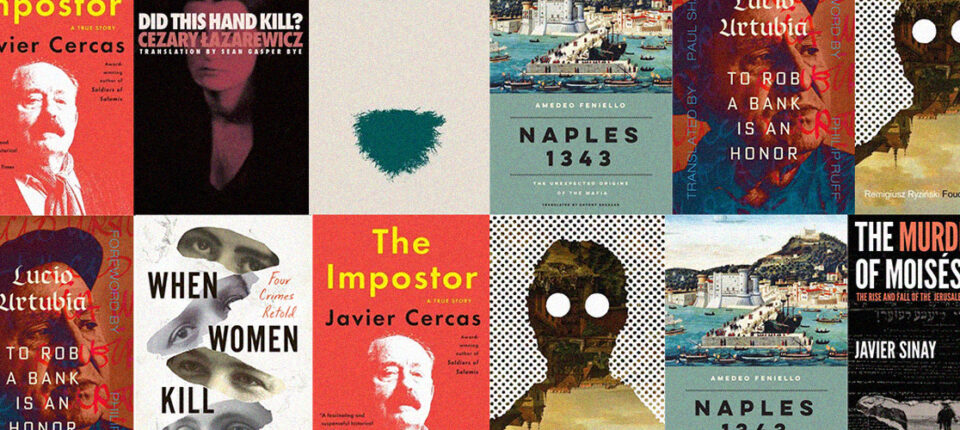Welcome to my latest labor of love: a list of true crime in translation, because as far as I can tell, no one else has bothered before. There isn’t much translated nonfiction, full stop—the following list has been assembled from the past 6 years, when I first started tracking the phenomenon. Much of the list is by anthropologists and historians, rather than journalists; it may seem a bit pithy, but I think journalists tend towards fulfilling the prejudices of their audiences, while anthropologists want to understand. These are almost all deep dives into history, ranging from the 1340s to the 1980s, and they all reckon with the long shadows of trauma and the ways in which crime is the story of humanity and society, a rupture that contains the whole world. (Also, weirdly, almost all of these books are from Catholic countries. Not sure entirely what that means! Perhaps the Protestant work ethic breaks down when it comes to acknowledging suffering instead of success.)
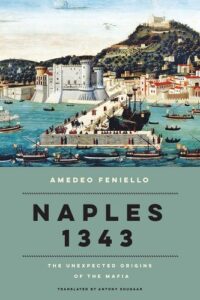
Amedeo Feniello, Naples 1343 : The Unexpected Origins of the Mafia
Translated by Antony Shugaar
(Other Press, November 12)
Apparently, we can blame the rise of the Mafia on the diffused empire structures of the high Middle Ages, as weak rulers and a long period of social crisis allowed the most powerful families of Napoli to begin their long journey into organized crime. The central incident that inspired the book involves a group of powerful nobles and citizens of Naples who, during a harsh year of famine, hijacked a grain ship bound for elsewhere in the peninsula, and faced both ineffectual resistance and prompt censorship for their act of rebellion. Amadeo Feniello is an erudite historian who doesn’t let his deep knowledge of his subject matter get in the way of a good anecdote. My favorite detail in this book? People dumped so many murder victims in Medieval Italy that the city fathers had to put covers on the wells. Don’t kill where you drink, folks!
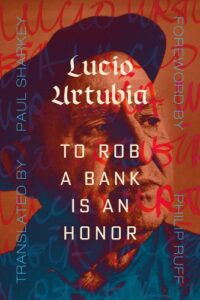
Lucio Urtubia, To Rob a Bank Is an Honor
Translated by Paul Sharkey
(AK Press, December 3)
Lucio Urtubia’s memoir reads like the story of a fairy tale trickster, which makes it all the more impressive that the story is real. Bank robber and anarchist Urtubia cheerfully bilked CitiBank for millions in the 1970s—and got away scot-free. Like, he didn’t even go to prison. And he’s so charming, and devilishly handsome (in my mind, anyway). Why don’t we have bank robbers like this in the US anymore? I want a politically aware Bonnie and Clyde!!!!
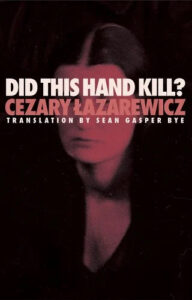
Cezary Lazarewicz, Did This Hand Kill?
Translated by Sean Bye
(Open Letter)
Cezary Lazarewicz takes a deep dive into a bizarre crime that captivated interwar Poland. When a teenage girl is found murdered, suspicion quickly falls on the governess having an affair with her father. The real story of what happened, and and the eventual fate of the accused murderess, remain lingering questions, but the infamy of the crime, and the media circus surrounding, are never in doubt. As a quick side note, it’s intriguing how many books on this list are about female murderers when so few exist.

Selva Almada, Dead Girls: A Chronicle of Femicide
Translated by Annie McDermott
(Charco Press)
Dead Girls is the product of years of research by the author into the cases of three murdered women, each the victim of what we now call femicide—killed for being women, killed as women, and blamed as women for their own deaths. Almada is a writer of literary fiction, as well as various nonfiction endeavors, and the haunting poetry of this rageful project will linger with the reader for quite some time.
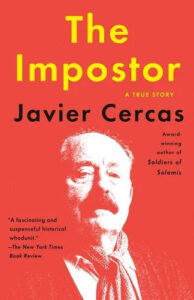
Javier Cercas, The Impost0r
Translated by Frank Wynne
(Knopf)
This one came out way back in 2018, when CrimeReads first launched, and I haven’t stopped thinking about it since. Cercas’ fascinating investigation looks at the fraudulent past of a pretend hero unmasked by an obscure historian; the titular impostor had claimed for decades to have been imprisoned in a concentration camp for his efforts to support the Spanish Republicans, earning widespread admiration from the people of Spain, when in fact he had collaborated with the fascists and never spent time in any prison camp. Cercas uses this story to pose difficult questions about identity, celebrity, and the ongoing exploitation of historical suffering.
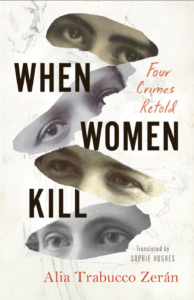
Alia Trabucco Zerán, When Women Kill: Four Crimes Retold
Translated by Sophie Hughes
(Coffee House Press)
Alia Trabucco Zeran has one of my favorite books out this year as her fiction debut, Clean, but I first came to her writing through this intricate examination of societal reactions to prominent crimes by women, initially titled Las Homicidas and translated to “When Women Kill”. Each of the four killers profiled in the book came to prominence as part of national debates on the changing roles of women; each had to be re-positioned as non-threatening to social order at large—aberrations as objects of fascination, not fear. I really can’t recommend this haunting meditation on crime in society enough. Also, when I was reading When Women Kill at my favorite coffee shop (shoutout to Barrett’s!), my barista asked me about it, I told her that I was reading about Chilean murderesses, and she gave me a high five, which was awesome. When Women Kill is translated by the ever-capable Sophie Hughes, who also translates the work of Fernanda Melchor, another personal favorite.
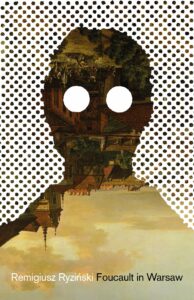
Remigiusz Ryzinski, Foucault in Warsaw
Translated by Sean Gasper Bye
Foucault wrote much of A History of Madness while residing in Warsaw as an envoy of the French arts; he also spent his time in the city exploring Warsaw’s gay underground, and eventually, found himself the victim of a honeytrap and deported back to France. In Remigiusz Ryzinski’s enthralling anthropological project, the author traces Foucault’s time in Warsaw and the history of gay life behind the Iron Curtain through a careful examination of Soviet surveillance files and a candid set of interviews with the remnants of socialism’s queer subculture. Foucault had a personal relationship with the Polish nation that lasted long after his expulsion, culminating in a trip to support the Solidarity movement while he was already dying of HIV. Ryzinski makes clear the connection between Foucault’s study of madness and the ways in which the 20th century ostracized same-sex attraction—sanity needs its foil of madness, just as the straight world needs queer people. Every norm needs an other, to punish and to define itself against. And every bookshelf needs this book.

Stefan Hertmans, The Ascent
Translated by David McKay
(Pantheon Books)
This book is such a fascinating project of autofiction. Stefan Hertmans had already sold his former home in Ghent when he read a memoir by a former occupant that shocked him: before he’d lived there, a Flemish nationalist turned SS officer had called the place home. Hertmans uses this jarring revelation as an excuse to explore the home’s long history and reconsider the meaning of sanctuary.
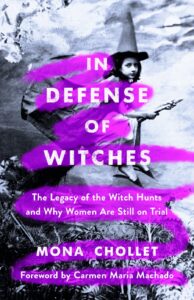
Mona Chollet, In Defense of Witches: The Legacy of the Witch Hunts and Why Women Are Still on Trial
Translated by Sophie R. Lewis
(St. Martin’s Press)
Mona Challet uses this work to explore not only the history of witch burnings and what they meant for the persecution of difficult women, but how those same trends of ostracization and punishment are played out today. There’s also an intro from Carmen Maria Machado, which really clinches this one as a must-read.

Javier Sinay, The Murders of Moisés Ville: The Rise and Fall of the Jerusalem of South America
Translated by Robert Croll
(Restless Books)
The Argentine investigative journalist Javier Sinay, in his new book, The Murders of Moisés Ville, brings his professional craft to bear on an intensely personal story: of the Jewish settlement of Argentina’s agricultural lands, and of the atrocities the new immigrants suffered there. For Sinay, the story begins with the discovery of a 1947 article written by his great-grandfather, addressing the murder of twenty-two settlers. The reader is then taken along for the investigation as Sinay discovers his great-grandfather’s central place in the era’s Yiddish-speaking community of Argentina. Sinay is soon learning Yiddish himself to better relay the stories of people who fled czarist Russia in search of a new life in the “Jerusalem of South America,” only to find new dangers and oppressors waiting for them. Starvation, land inequality, and bands of violent gauchos were just some of what the community faced, and their stories were passed down through family lore and through the country’s Yiddish press. Sinay’s new book is at once a compelling piece of journalism born of archival research and interviewing, and also a meditation on cultural legacies and inter-generational trauma. –Dwyer Murphy, CrimeReads Editor-in-Chief

